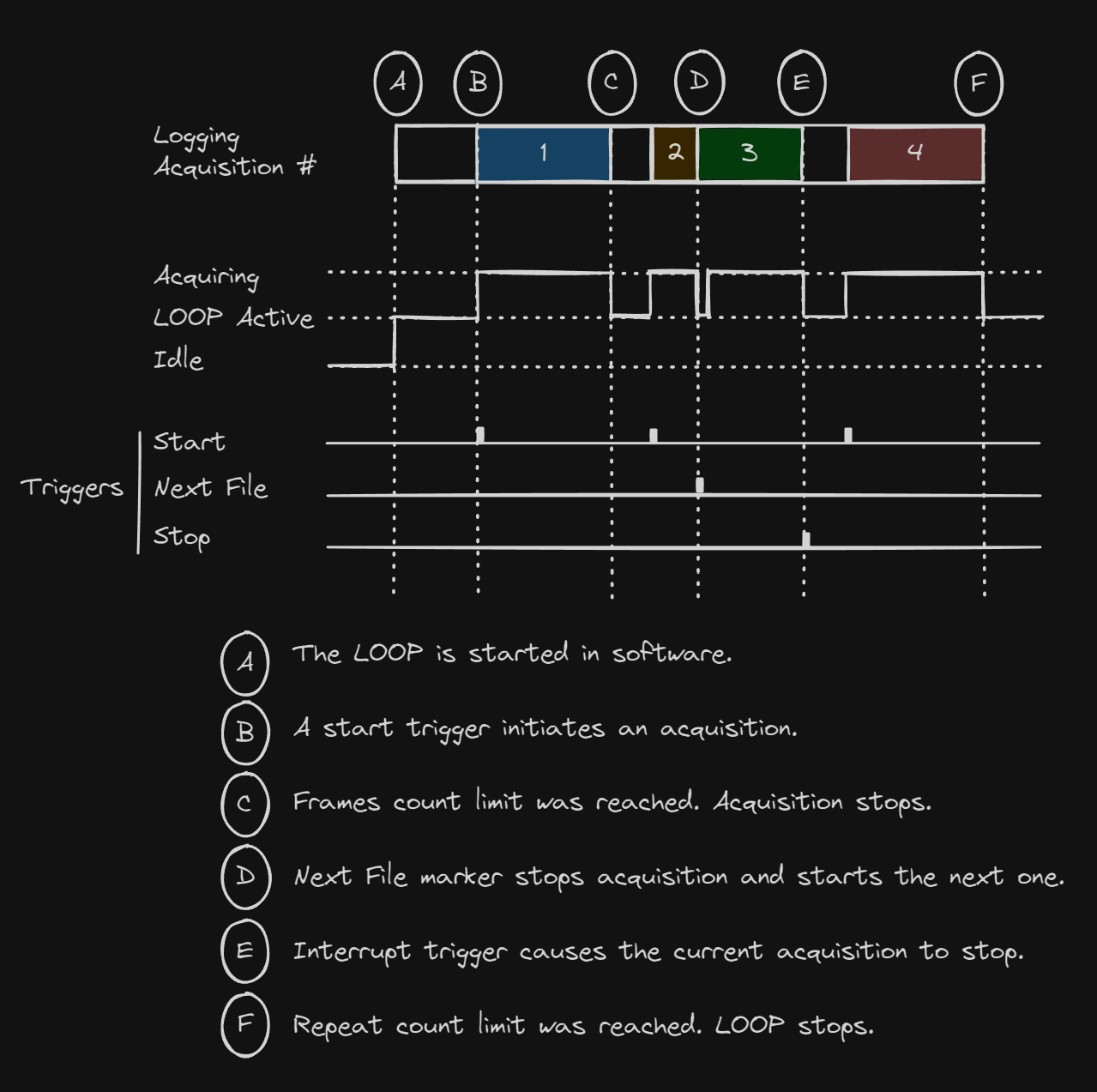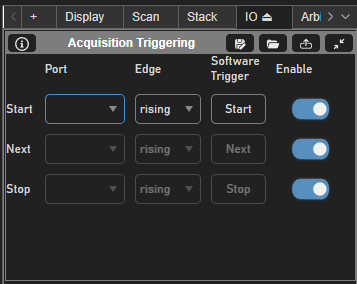Acquisition Triggering

The role of acquisition triggers during a LOOP
ScanImage® consists of continuous (gap-free) numbered acquisitions, which are:
Started by an Acquisition Start Trigger
Ended when either:
An Acquisition Stop Trigger is detected
Specified set of {# Frames, # Slices, # Volumes} is completed, as entered in the Main Controls and FastZ Controls (if enabled)
Numerically incremented by Next File Markers, as the current acquisition ends and the next begins
The Acquisition Start Trigger, Acquisition Stop Trigger, and Next File Markers are TTL edge input signals to ScanImage.
When Acquisition Triggering is enabled, external timing signals can be used to control the timing of ScanImage acquisitions. Destinations for each of these trigger sources are routed to the ScanImage® Control DAQ and configured in the Acquisition Triggering GUI.
The Acquisition Start Trigger is mandatory: a trigger is self-generated by ScanImage® if an external source is not provided.
To activate external triggering, navigate to the IO tab in the left pane, specify a port to receive TTL pulses, and set the enable switch to on (blue color indicates it is enabled).

Acquisition Start Trigger
ScanImage® will use either an external input or an internally generated signal as the start trigger for acquisition.
After a GRAB or LOOP is selected from the Main Controls, ScanImage® begins listening for the start trigger. Note that ScanImage® will idle until the trigger is received.
Once the expected TTL is detected, ScanImage® will begin the acquisition.
If the Software Trigger button is pressed, the trigger is generated automatically as soon as the hardware is ready, and the acquisition will begin.
Note
any start triggers received while the system is already acquiring are ignored.
Next File Marker
When a next file marker is received, ScanImage® will finish acquiring the current frame, then stops the current acquisition and immediately begins the next one.
When this event is observed, the counter is incremented indicating another acquisition has started (see Main Controls for more information).
This is especially useful for aligning ScanImage® image file numbers to behavioral/physiological epochs defined by external software.
Acquisition Stop Trigger
The stop trigger signals that acquisition should immediately stop after the current frame is done being acquired, even before the full specified set of {# Frames, # Slices, # Volumes} is completed.